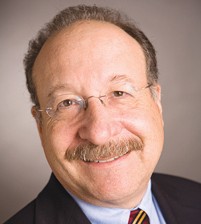
Henry Dubroff
When UC Santa Barbara hands out its annual “Venky” award for entrepreneurial leadership each spring, typically it is a top scientist who gets the hardware.
That’s because the award is named after Venky Narayanamurti, the former UCSB dean of engineering and an architect of the strategy that made UCSB a world leader in materials, photonics and other fields.
But this year was different — the award went not to a technologist and not to a UCSB alumnus, but to an enabler of technology who is part of the broader innovation culture of the South Coast. And Venky himself traveled all the way from the Boston area to offer remarks about the future of technology.
The enabler of technology is Lynda Weinman, founder and leader of Lynda.com, the spectacularly successful company that enabled thousands of people to better understand graphic design, spreadsheets and software. Lynda.com became one of the first companies in the region to achieve true “unicorn” status when it was sold to LinkedIn for $1.5 billion in 2015. The transaction closed on the day the Business Times inducted Weinman into our Business Hall of Fame.
In her remarks, Weinman described herself as an accidental teacher and entrepreneur who stumbled on the idea that instructions for operating personal computers should be written for consumers, not technicians.
“Imagine not touching a computer until you were 28 years old,” she said, providing perspective about the way that new waves of technology have overtaken our lives and those of our grandkids. “I began my career not understanding I was a teacher,” she said, adding that “the hallmark of entrepreneurs is to make an improvement to something that exists.”
Under Weinman and her husband Bruce Heavin, Lynda.com took computer manuals that were often repurposed as monitor supports and transformed them into videos that were easy to watch and easy to follow.
The company grew in part by not following the traditional venture capital model; it generated cash that was invested back into the business, driven largely by the passionate engagement of its subscribers.
Along the way, Weinman, who had a nontraditional experience herself, transformed the idea of education, shedding a lot of the academic superstructure in favor of an enjoyable, skills-based experience that allowed each student to “work at his or her own pace.”
“Education is a tarnished brand,” she said, “but learning is pristine.” She also discovered the tremendous power of film and the visual arts to stimulate learning and creativity, she said.
During his remarks, Narayanamurti, who left UC Santa Barbara to become dean of engineering at Harvard, applauded Weinman’s intuitive approach to learning.
He talked about the challenge of providing engineering students with more background in humanities and social sciences to make sure that technology remains in touch with the humans who will use the inventions of the future.
During a conversation after the program, he told me he was working on a book that will be a series of essays about technology and its role in society. He pointed out that behavioral economics has transformed a profession that was rooted in mathematics and wondered if something similar might happen for technology.
My takeaway was that technology and education are two fields that have been dragged into the public square in recent years. The impact of new technology on jobs in the manufacturing sector has caught a lot of people by surprise and created a lot of social distress. Likewise, the debate over the future of public education has gotten louder and louder.
It’s clear that some big thinkers in the tech world will figure out how to bend the curve of technology, and the learning experience, so that it doesn’t leave so many people behind. In their remarks on March 8, Weinman and Narayanamurti gave a few hints about what that future might look like.
• Reach Editor Henry Dubroff at hdubroff@pacbiztimes.com.






 Print
Print Email
Email

















